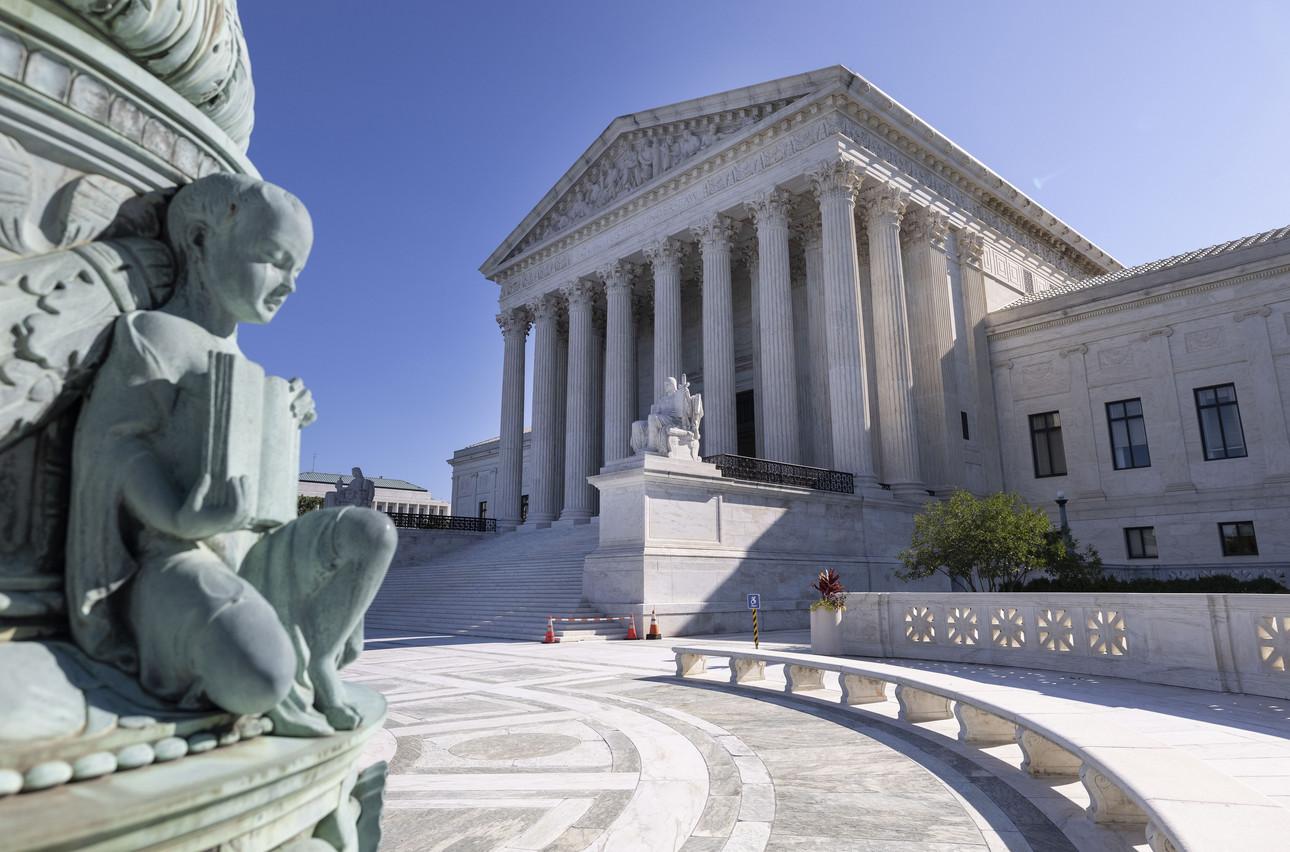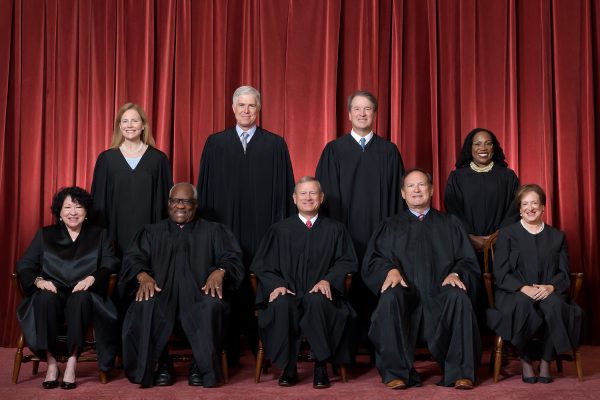
Adviser’s Note: The views, thoughts, and opinions expressed in this opinion article belong solely to the author and do not reflect the view of The Colt Chronicle Staff, Kinnelon High School, or its students and staff members.
On June 24, 2022, the Supreme Court overturned the Roe v Wade decision in the court case Dobbs v Jackson Women’s Health Organization. This major decision was passed on a 5-4 vote, and it undid the previous ruling by the the Supreme Court in 1973 that declared state laws banning abortion procedures as void.
In the aftermath of the decision, thousands of protestors have gathered, citing experts who predict a rise in maternal mortality due to an inability to avoid death during childbirth. At the same time, thousands of supporters have commended the decision as a moral victory, claiming that it will save many more lives than will be lost. How did we get here, to this divisive political firestorm that has divided our country? What does this mean for our future?
The battle over abortion rights has turned into one that is as old as our country itself: states rights vs federal power. The overlap between the Constitution’s elastic and reserve clause is part of what caused the legal portion of this dispute, since one promises the power to make laws governing the people to the states, and the other gives that power to the federal government.
The issue of abortion is simultaneously a legal issue and an ethical one, and people are making arguments from both perspectives. As Peter Zablocki, history teacher at KHS put it, “What we’re seeing here is that even though it’s very specific and it’s a very hot button issue, as far as politicians are concerned; they can almost fall back on the idea that they are trying to interpret the constitution, since its the safer bet than saying ‘I believe in this.’” Since this question has been made into a question of laws rather than one of ethics, it is important to know how the constitution has shaped the arguments of both sides.
By looking at this legal side of the issue, we can trace the roots of the divide back to the debate over interpretation of the constitution. Caitlyn Ward, a KHS History teacher, explained the issue as “the idea of broadening rights, or restricting rights. There’s sort of a pattern specifically with the supreme court either broadening or restricting rights based on the issue.” Since the first political groups of federalists and democratic republicans first emerged, there has been vicious debate of where the line should be drawn regarding the rights guaranteed to American citizens.
These tensions reached a boiling point around 49 years ago, when 21-year old Norma McCorvey discovered she was pregnant with her third child and sought to have an abortion. She was not originally convinced that abortion should be legalized, but her lawyer told her, “It’s just a piece of tissue,” and this convinced her to go to court under the legal pseudonym Jane Roe. The defendant in the case was Henry Wade, the Dallas County District Attorney, defending a state law that banned abortion. After Roe won the case, it was appealed to the Supreme Court. The decision once again was made in Roe’s favor, this time with a 7-2 vote (a bit different than 5-4) and abortion was once again legal. The argument was built on the idea that banning abortion endangers the mother’s right to personal privacy.

The craziest part? Most of that was probably new information to you. Due to its power to shape student’s perceptions of the past, the question of how history should be taught has been hotly debated. The way history is portrayed has the ability to shape policy and precedent, and the debate over how to frame this portrayal is on track to get even more heated.
For decades, Roe v Wade has been referred to as legal precedent. It has come to be seen as an important part of our legal history that must be taught. Now that the decision has been overturned, it can no longer be considered legal precedent, and people have started to stop talking about it as much. Even on the national level, College Board recently announced that Roe v Wade would no longer be on the AP Government and Politics exam, since the questions are written in advance and they may be confusing to students in the coming years if abortion is made completely illegal. The case won’t be cut out of the curriculum, but there is definitely some emphasis being removed from the topic.
Education in history is a very interesting subject, since an understanding of the past is what shapes our perception of the present and occasionally helps us plan for the future. When studying history, it is important to look at both sides of the issue, and to look at all the facts before making a conclusion. Much like in science, withholding information from a student can cause them to make incorrect decisions and end up doing significant damage. By taking a temporary break from asking Roe v Wade questions, The College Board has intentionally avoided spreading misinformation, since abortion could be completely illegalized in the coming years, and AP questions would still be asking about the legal precedent the case set. Despite this effort to proceed with caution, many students are being taught completely different stories about how the original case played out, and many more are simply learning false information about history in general.
We’ve already seen signs of this misinformation, with textbooks in many states leaving out slavery or portraying it differently than how we know it went down. Some authors have even gone as far as to say that “not all slaves were unhappy”, which completely misses the point of teaching the subject, by attempting to incorrectly portray the cruelty that was the reality of slavery. Other books refer to slavery as “black immigration”, or simply describe it in economic terms so as to avoid discussing the human costs. Some of these textbooks are long outdated, but many of them are still used in schools.
Specifically with abortion, many states (notably Texas) have implemented “educational gag order” laws that can be used to punish teachers for not deferring to a certain viewpoint in their instruction. This could result in teachers having to misconstrue an issue as being black and white when in reality, it is nuanced and might not lead towards the story they’ve been told to support.
Even in Chief Justice Alito’s draft majority opinion from the Dobbs case, he states that “An unbroken tradition of prohibiting abortion on pain of criminal punishment persisted from the earliest days of the common law until 1973,” Although this interpretation became the majority opinion on the case, legal scholar Melissa Murray and historian Nancy Cott point out that in reality, abortion before quickening has been an accepted practice even since colonial times (Abortion, Choice, and The Supreme Court). Alito chose to misrepresent the information, relying on distorted evidence and dismissing the truth in a footnote.
If this distortion of history continues, future students may never know the difference between this false narrative we’ve penned and the true story. KHS students seeing these troubling developments had very interesting thoughts on the issue. One student I interviewed put it very well when they said “-if they aren’t teaching it [Roe v Wade] it’s to avoid a controversial topic, which is invalidating women’s struggles and experiences, and if you stop teaching it you are erasing history, not just overturning it.”
It is also important to note that this student chose to remain anonymous, out of concern that they may be harshly judged for their opinions. The controversy and tension surrounding this has reached such an extent that many teachers have been reluctant to give their opinions in interviews about these types of issues since there is a threat of retribution.

This all speaks to the larger issue here, which is the unprecedented polarization and political divide of our country. In a world of conservatives vs liberals, people have been forced away from nuanced opinions and labeled as extremists in one direction or the other. Both sides have very reasonable arguments, but they’ve been overshadowed by extreme interpretations that make compromise impossible.
The recent Dobbs case was dominated by a battle between two different interpretations of the constitution, one side arguing that the right to privacy makes abortion a natural right, and the other side arguing that abortion is not included in the rights promised to the people, and is morally wrong. Abortion exists inside of a unique legal and ethical gray area, where a black-or-white decision isn’t always the right way to go, but when asked about their opinions on abortion, students almost always gravitated directly to one of the far ends of the spectrum.
As KHS history teacher Danielle Elia put it, “[Society] goes through this pendulum swing of the political spectrum where it becomes very liberal, and then it goes back to more traditional conservative ideas. We’ve seen this probably every 10 to 30 years… I feel like it’s been dialed in different directions and we’re polarizing more as a nation and there’s no gray area, you’re either one way or a different way.”
Looking forward, the intense polarization plaguing our political atmosphere is bound to get worse. When looking at these types of issues, it is important to remember that not everything can be boiled down to a right and wrong answer. To modernize the sentiments expressed by Thomas Jefferson in his inaugural address, “We are all conservatives, we are all liberals.” We all seek progress, but we all yearn for the safety of continuity as well.
Rather than labeling each others as extremists or seeking to suppress the opinions of others, we should be listening to each other now more than ever, looking to the past to plan for the future, and being honest not just with ourselves but with the new generation of students that will inherit the issues of the world… and the teachings of those that came before them.







